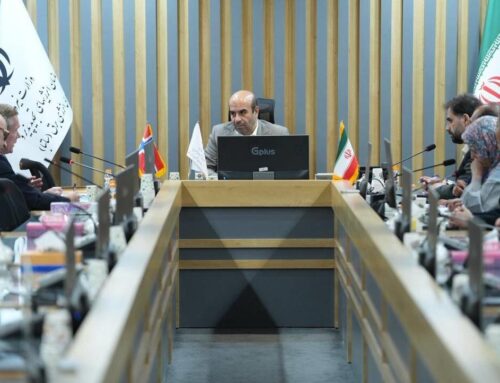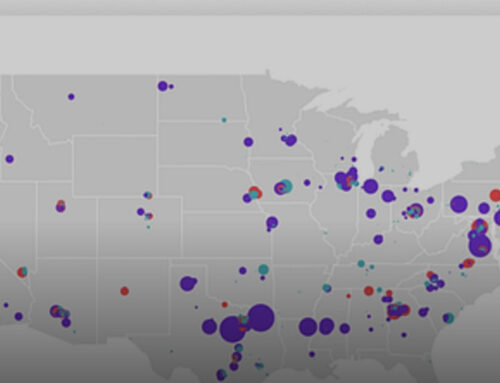Nairobi’s ‘Birdman’: Rescuing raptors on the streets of Kenya’s capital
October 5, 2025
Nairobi, Kenya – Shouts of “Birdman! Birdman!” trail 27-year-old Rodgers Oloo Magutha down a street in the centre of Kenya’s capital, Nairobi.
Vendors pause mid-sale, police glance away from traffic, and pedestrians abruptly stop to watch the man crowned with raptors on his head and shoulders. Children burst into giggles or shrink back in fear as crowds gather, phones raised like paparazzi.
- list 1 of 3Restoring the Balance
- list 2 of 3In Kenya, girls are sold into marriage to stave off starvation from drought
- list 3 of 3Ngugi wa Thiong’o was not just a writer, he was a militant
end of list
Magutha has lived on Nairobi’s streets for years, one among the many children and youth asking for coins from hurried passersby. He blends in with this marginalised community in every way but one: the wild birds surrounding him.
“Many people feel unsafe when approached by us, they will even hide their phones,” Magutha says about the general public’s reaction to his street family.
“But when they see the birds, everything changes … They come over to pet them, take photos. Someone who looked angry a moment ago is suddenly smiling.”
Magutha has been rescuing and caring for birds since childhood, and for years on Nairobi’s streets. Yet he remained a largely obscure figure until last year, when thousands of young people flooded the central business district to protest against rising costs and government corruption.
Images of Magutha went viral, lifting him to local celebrity status as the “Nairobi Birdman”.
Still, few know the story behind the images – one of a life shaped by loss, adversity and an uncanny companionship with the birds he rescues, a connection that has sustained him through more than a decade living on the streets.

‘Bird enthusiast’
“I never go looking for the birds – they just come to me,” says Magutha, his beanie tilted under the weight of a kite perched on his head, another clinging to his shoulder.
Advertisement
He sits on a roadside in Kayole, a low-income neighbourhood on Nairobi’s edge, where he recently moved after a helpful stranger offered him shelter. Children circle him, brushing the kites’ wings before darting off, laughing.
Magutha’s story began in Nakuru, a city in the Rift Valley known as a birdwatcher’s paradise.
“I used to sneak into Lake Nakuru National Park and sit by the water, watching flamingos, pelicans and so many other birds,” Magutha says. He would sometimes pet them, share food, and felt they trusted him when they stayed calm around him.
“That’s when I became a bird enthusiast,” he says. While other children hunted with slingshots, he persuaded them to protect birds instead. At home, he raised pigeons, chickens, ducks and even rescued a flamingo.
But at 13, his mother, who was raising him alone, died suddenly. Left without a stable home, he drifted between relatives before ending up on the streets. He survived in Nakuru, Mombasa and Nairobi by asking passersby for help or selling plastic bottles and scrap metal.
In each city, he says, street residents gathered around, drawn to him much like the birds. Over time, they became his family, giving him a sense of belonging.
But it was in Nairobi, near Kenya’s National Archives building in the central business district, a common gathering spot for street residents, that Magutha began to build his world.

Life there, he says, is defined by struggle. “Nobody comes to the streets because they want to,” Magutha says. “Most of them are traumatised; they’ve been abandoned or mistreated.”
Many of his street family are orphans, others escaped difficult families, and most arrive weighed down by trauma or neglect. Sleeping rough is particularly difficult on cold nights, and drugs are everywhere. “Everyone wants an escape. They just sniff it to forget,” Magutha says about those who inhale mafta ndege, a cheap petroleum-based solvent.
The community also faces pushback from police. “They always chase us away. They beat us because they think we disturb people,” he adds.
Yet he sees a beauty in his street family that they often cannot see in themselves, and tries to guide the younger ones – teaching the children skills including reading and writing – and urging them to imagine a better future.
“They have to believe in something better, but when you’re on the streets, it’s hard to imagine anything else.”
‘Governor’ of the birds
It was about four years ago, while trying to nurture hope where little seemed to grow, that Magutha says a sign appeared. Beneath a tree on Moi Avenue, he and his street family were sharing donated chips and chicken when a wounded baby black kite stumbled into their circle.
Advertisement
Frail and starving, with its parents nowhere in sight, the bird accepted pieces of their meal and climbed onto Magutha’s hand. The two quickly formed a bond.
Months later, he named the bird Johnson, after Nairobi’s governor, Johnson Sakaja. “Because I saw him as the governor of the other birds,” he laughs, as pigeons he has since rescued swoop down to rest lightly on his shoulders.

Meeting Johnson marked a turning point for Magutha, giving him purpose and easing the depression that often pervades street life. “Johnson became my hope,” he says. Despite efforts to release him back into the wild, the bird always resisted. “So I decided to keep Johnson as a companion because we’ve been through a lot together,” he says, as the kite flutters onto his head – its familiar perch. “He’s a big part of me now.”
Before long, other injured, sick, or orphaned birds found their way to Magutha. Over the years, he has cared for five black kites, crows, an owl, marabou storks and pigeons – nursing them back to health before releasing them. At Uhuru Park, he teaches them to take their first flights and hunt.
But Nairobi – once celebrated for its lush canopies – is steadily losing its urban forests, and with them, the birds’ homes. Entire swaths of trees have been felled for roads and office blocks. Authorities frame it as economic progress, but conservationists warn of rising temperatures, worsening air quality and heightened flood risks.
Each felled tree means nests destroyed and chicks tumbling to the ground. “When the nests fall, the babies are just left there,” Magutha explains. “Their mothers don’t come back because they think maybe a predator attacked them.” So far, he has rescued four kites from the wreckage of Nairobi’s disappearing treescape.
The rescued birds, which once also included an owl balanced on one of his shoulders and a broken-winged marabou stork that constantly trailed him, have made Magutha a spectacle on Nairobi’s streets, drawing a mix of curiosity and apprehension. Many stop to take photos or approach nervously to touch the birds, with Magutha urging them to let go of their fear.
“I like to see people smiling,” he tells Al Jazeera with a wide grin. At Jamia Mosque – the city centre’s main mosque – fellow worshippers gave Magutha, who converted to Islam as a child, the nickname Nabi ya Ndege, Swahili for the “bird prophet”.
“The birds made us less invisible to people,” Magutha says. “And that’s my dream: to make our community visible and to show we’re just as human as anyone else – and not something to be feared.”

Going viral
While Magutha and his birds had long turned heads among passersby, the June 2024 protests brought a new kind of spotlight.
Kenya’s youth had been simmering with anger after President William Ruto swept into power on promises of jobs, lower living costs and small business loans, only to scrap subsidies and raise taxes.
Advertisement
On June 18 – the day parliament was to debate a new finance bill – months of online outrage spilled into the very streets Magutha calls home. As police units massed outside and demonstrators began to gather, Magutha woke from his slumber inside an abandoned building near the National Archives.
Though unaware of the planned march, he decided to join. “I’m an environmentalist and an advocate for street families, so when I learned what was happening, I knew I had to take part. I want a democratic country and a better future for our generation,” Magutha says.
When he stepped into the streets with Johnson on his head and two other kites, Jaimie and Jannie, perched on his shoulders, he instantly drew a crowd. Protesters pulled out phones for selfies, while journalists jostled to interview Magutha.
This quickly drew the attention of the police. “When they saw people crowding around me, they assumed I was a leader,” he recalls.
During the days-long demonstrations, which were met with a brutal police crackdown, Magutha was beaten with wooden clubs and shot in the head with a rubber bullet, causing lasting vision problems. He thinks the officer aimed at Johnson, but the bullet hit him when he moved to protect the bird.
In another incident, police fired a tear gas canister directly at his leg, knocking him to the ground. Footage shows his raptors clinging fiercely to him, refusing to budge even as rescuers try to push them aside.

Magutha’s image from the protests exploded online. His viral fame, however, brought little opportunity.
“It’s like I became visible, but remained invisible at the same time,” he says with a disheartened shrug.
Despite the attention, the harsh realities of street life remained. After the protests, Magutha’s days went back to scavenging for food or coins, with nights spent curled in a hessian bag on footpaths, in parks, or abandoned buildings.
“When you’re on the streets, you can’t be found easily,” Magutha says. “It’s hard to keep a phone because people steal. So if someone wants to give me clothes or help me, they can’t find me.”
His notoriety also bred tension among his street family. “When someone trends in Kenya, people assume there will be goodies,” he explains. “But none of that happened for me. As a street person, I didn’t get the same benefits another person would. Deep down, I feel guilty – my street family thinks I have money, but I’m not helping them.”
Dreaming big
Earlier this year, a well-wisher invited Magutha to stay at his home in Kayole, lending him a phone and giving him access to Wi-Fi so he could start creating social media content – something he had long hoped to do to inspire others with his passion for birds and the environment.
He created Instagram, YouTube, and TikTok accounts, where he shares videos of himself with his birds and documents his environmental work – cleaning rubbish from the nearby Ngong River and planting trees along its banks. Neighbourhood children follow behind him like a second flock, all eager to act as his cameraman.
But Magutha remains in the thick of struggle. In the central business district, supporters often donated meat for his birds; in Kayole, he must buy it himself. To earn money, he spends his days at the nearby dumpsite, sifting plastic from heaps of rotting waste – work that rarely brings in more than $2 a day.
The financial strain recently forced him to release the marabou stork, the owl, and several kites before he felt they were ready.

Magutha now keeps just one of the kites, Jaimie, as a companion for Johnson, and also tends to three pigeons.
Advertisement
His hardships, however, have not dimmed his ambitions. He often looks back on the day he rescued Johnson as a reminder.
“[Johnson] was so weak, but remained patient, trusting someone would rescue him,” Magutha says, gently lifting the bird from his head, stroking it with quiet affection.
“That’s how I am today – patient. Johnson was rescued, so maybe one day I will be, too. I’m just waiting for the right time, trusting the process. He was the first to show me hope that things in my life could change.”
Magutha dreams of one day building a shelter in Nairobi – one that rescues both people and birds.
“The birds and the people I meet on the streets – they are all in a similar situation,” he explains. “Both are in need of support and care. They are in the same struggle.”
He imagines a space where children from the streets can find shelter, food and clothing, and a sense of purpose through caring for rescued birds and the environment. “I want to instil a passion for the birds in the street children. I will teach them about the ecosystem, about the climate, about the importance of planting trees and cleaning the rivers.
“When I bring them together, it will be like a big family.”
At the heart of this dream is a simple philosophy: love.
“Everyone always asks me how I tame these wild birds. It’s just by showing them love and care,” Magutha says. “When you show them love and make them feel safe, they give love back. That’s true for birds – and it’s true for people.”

Search
RECENT PRESS RELEASES
Related Post



